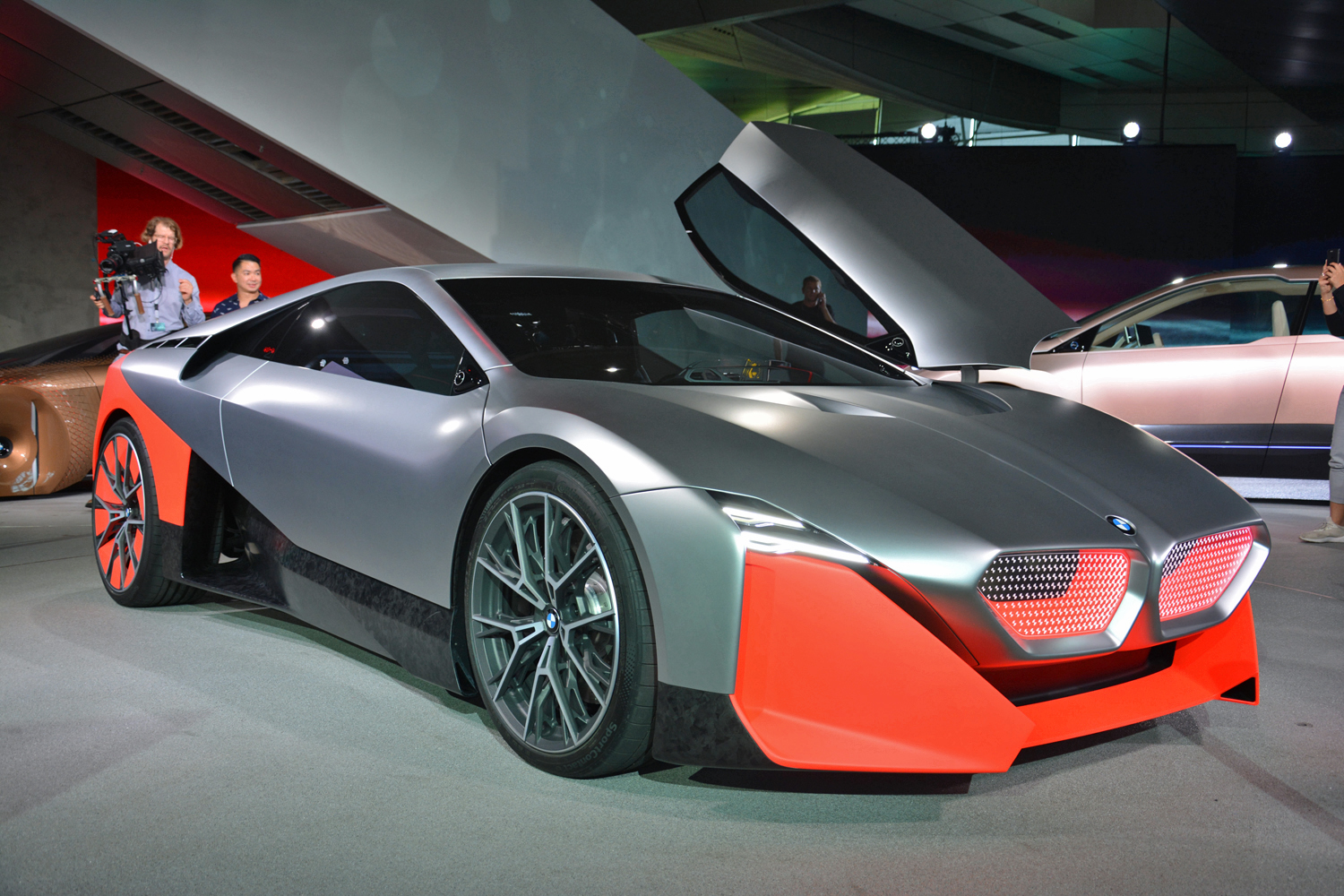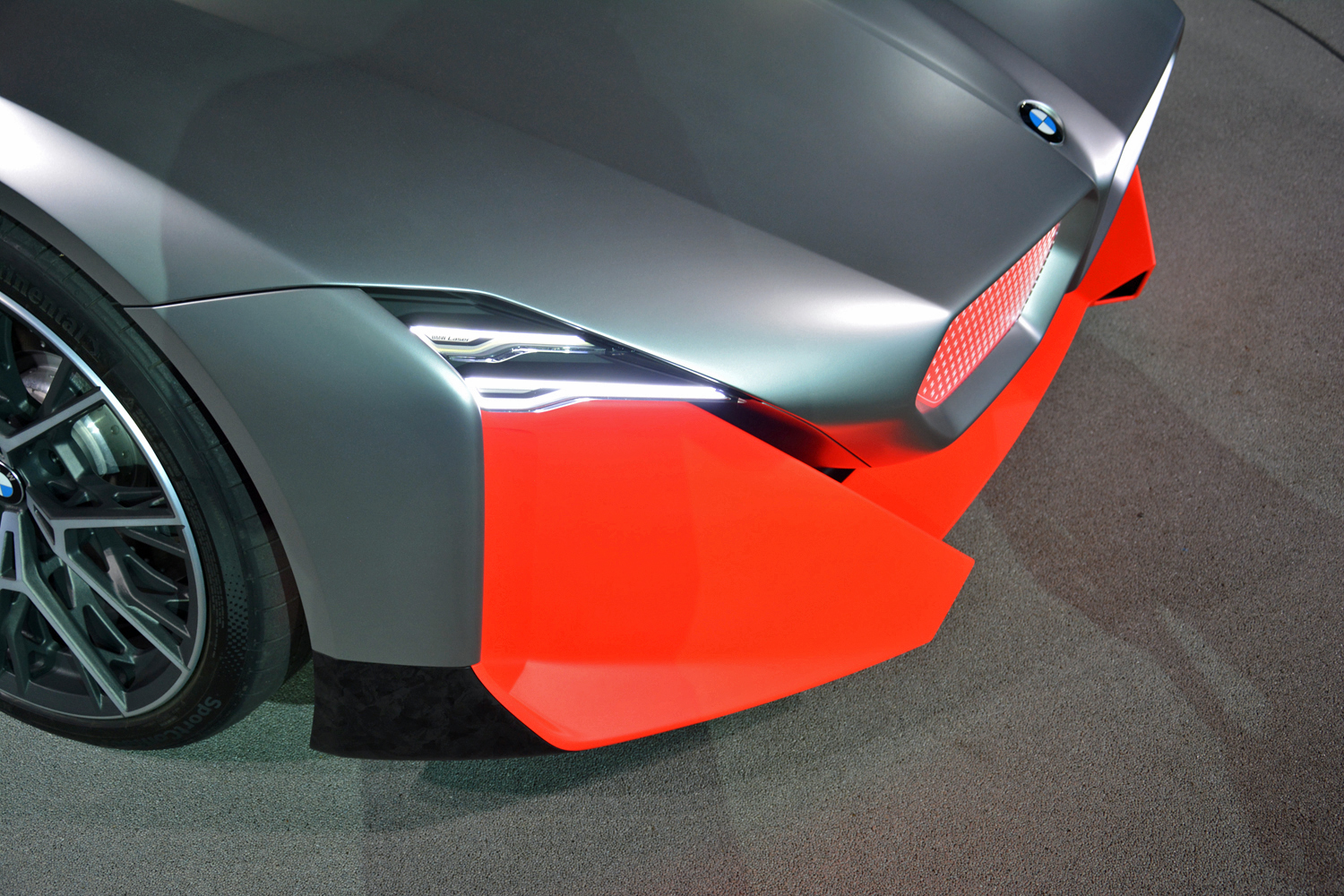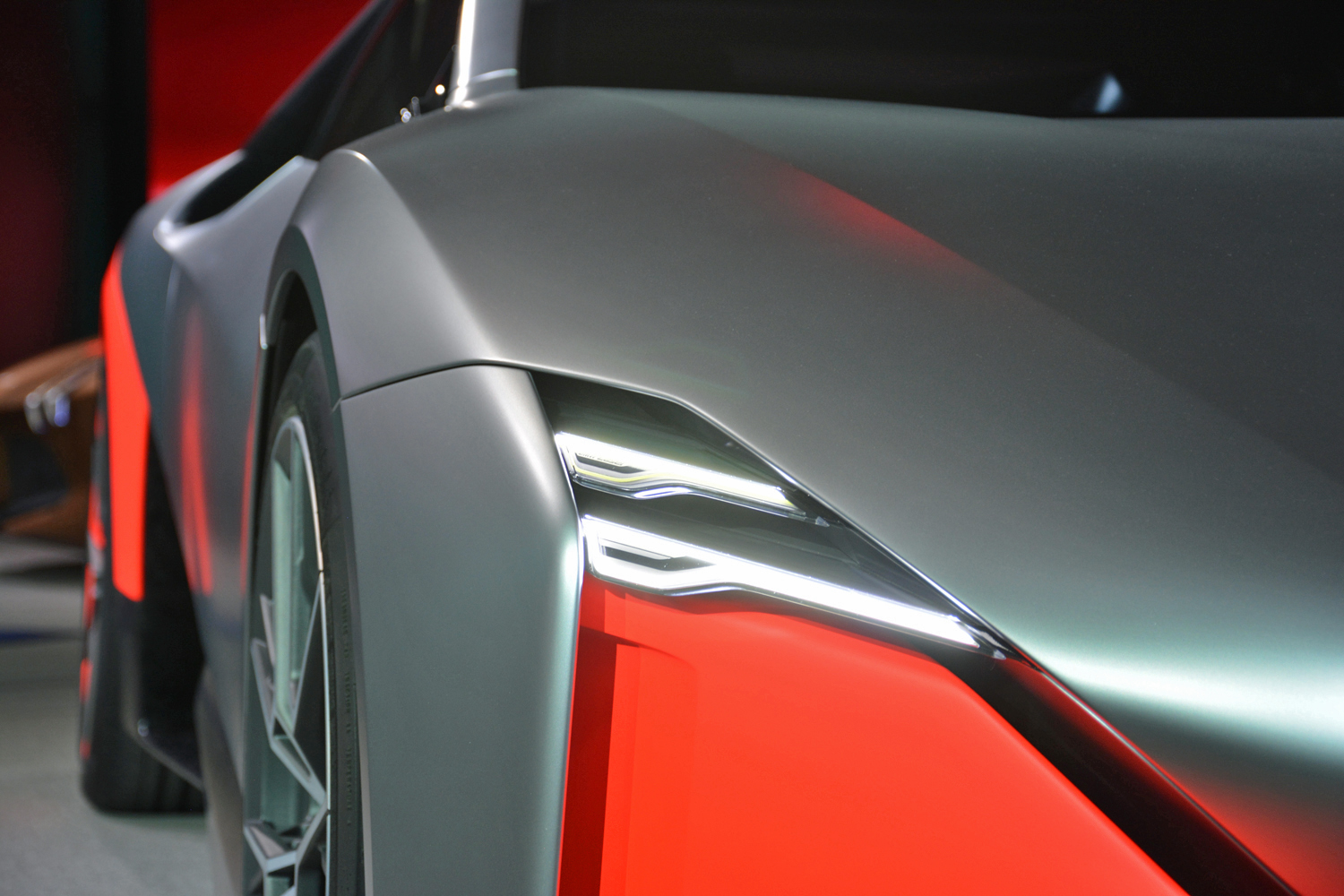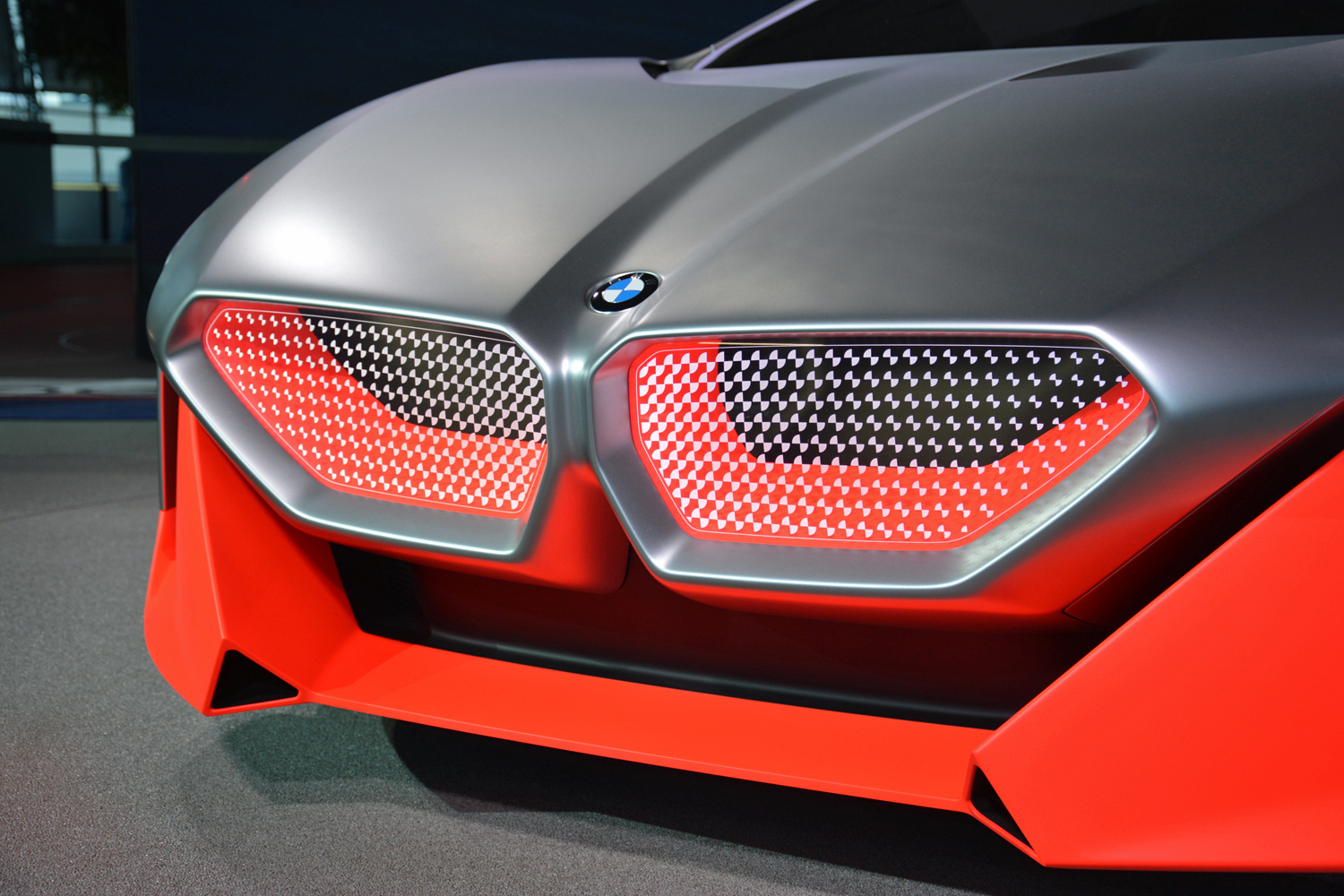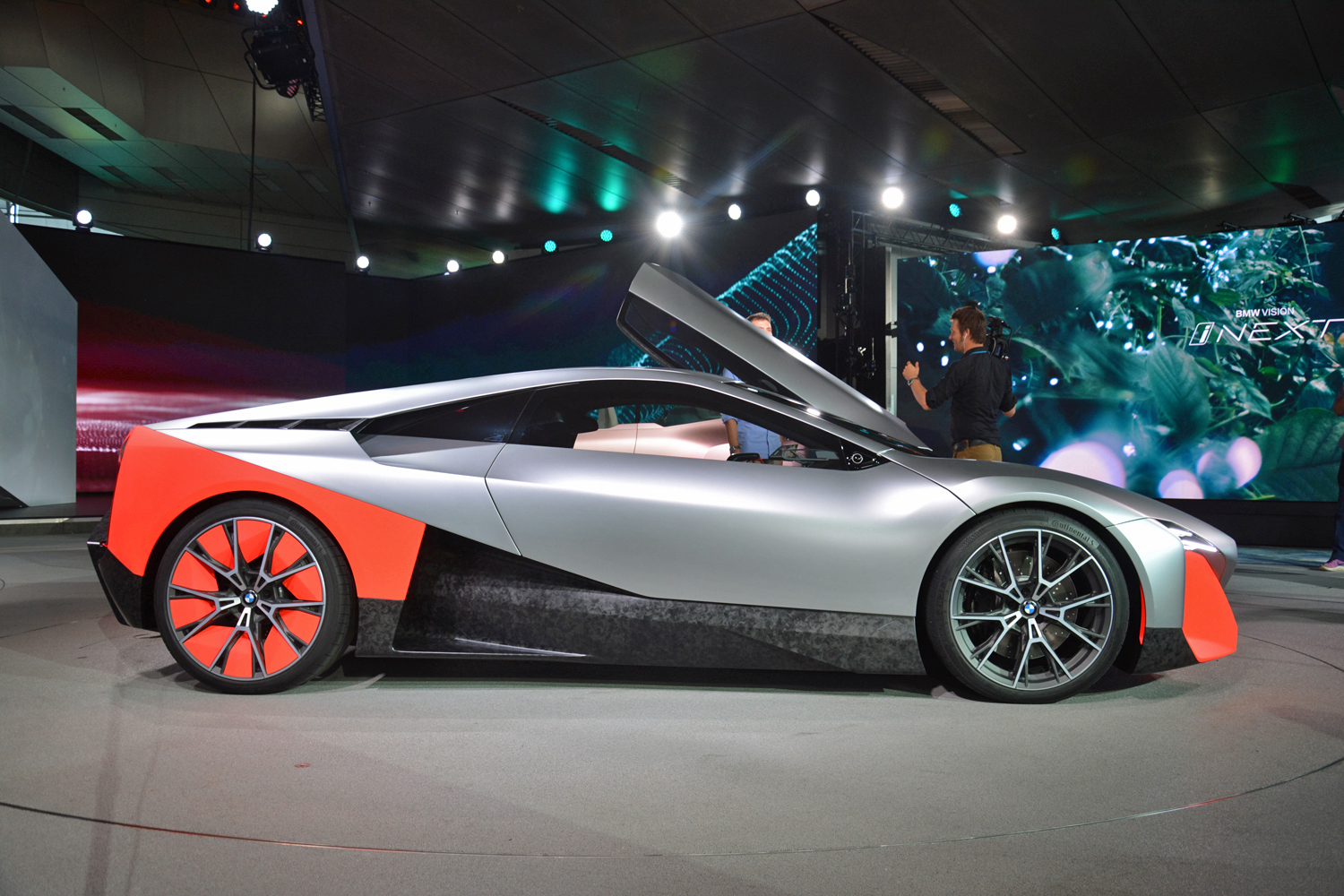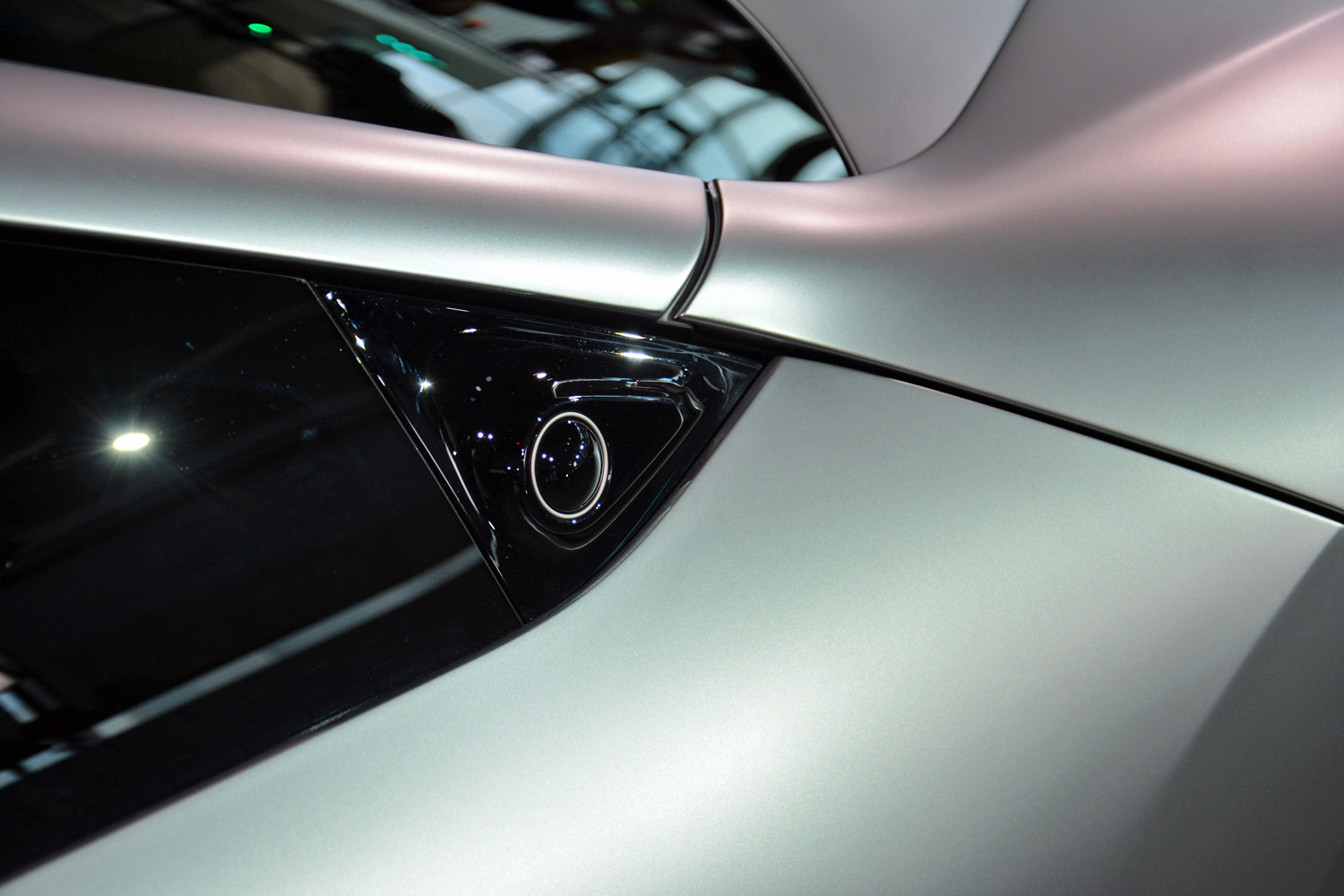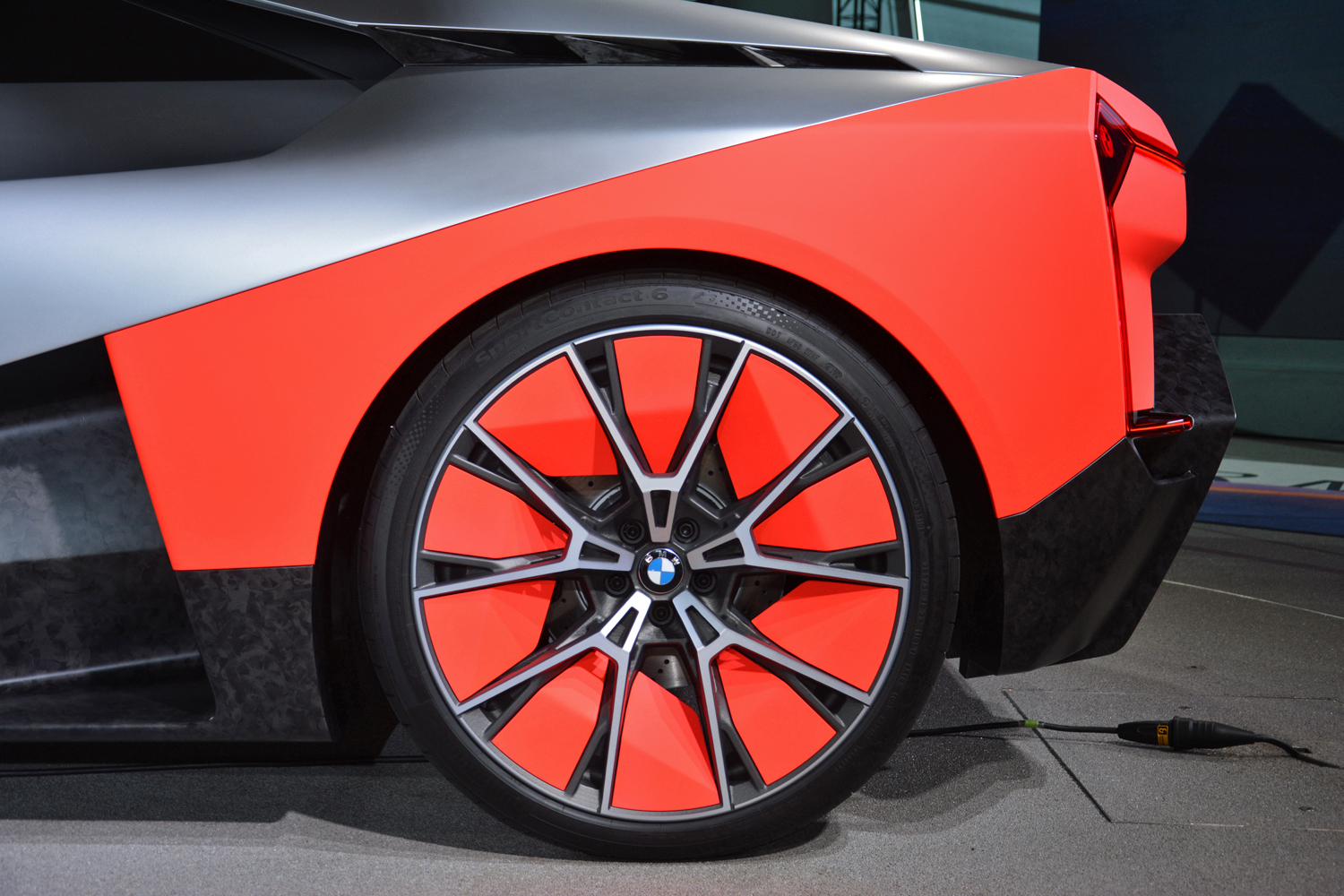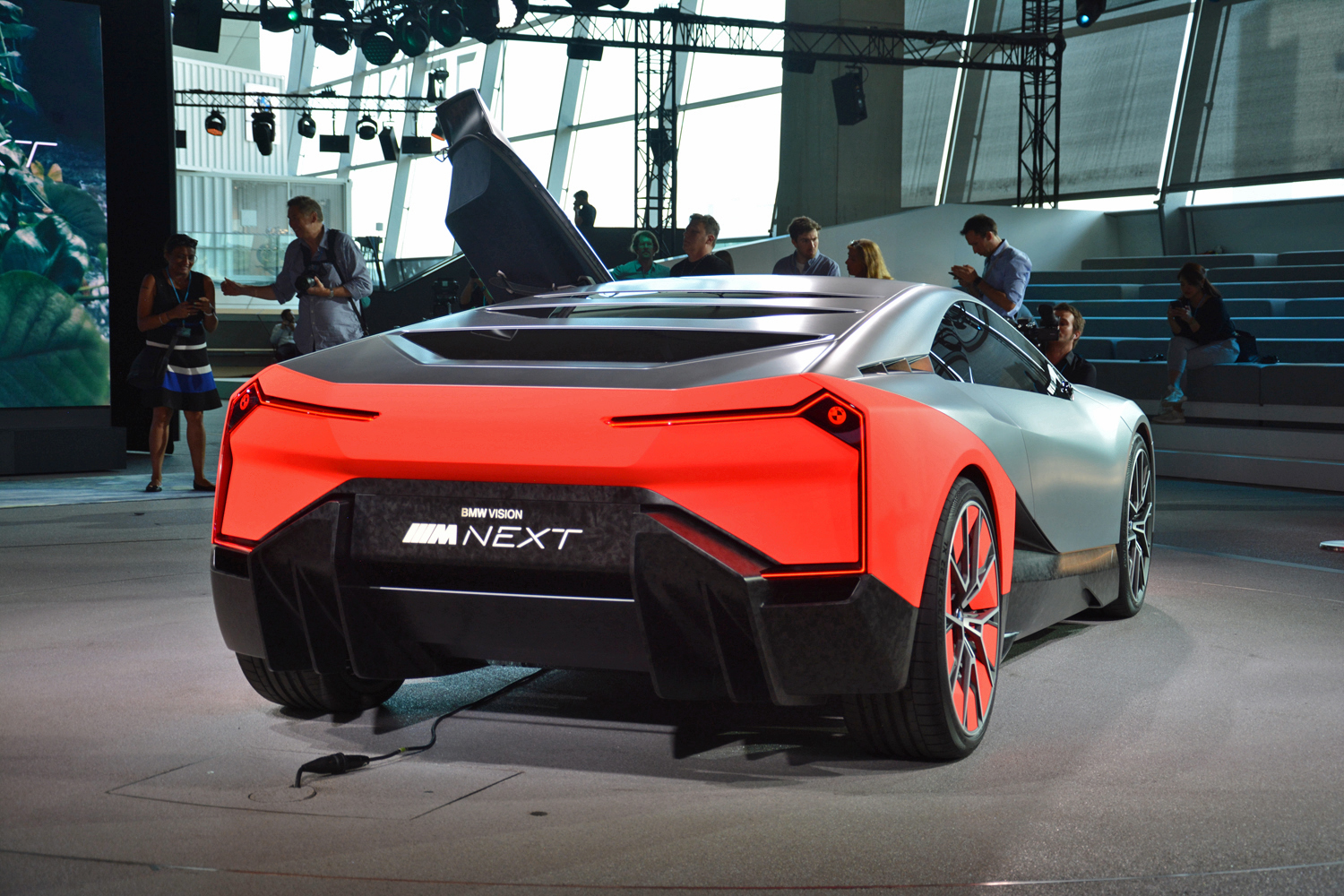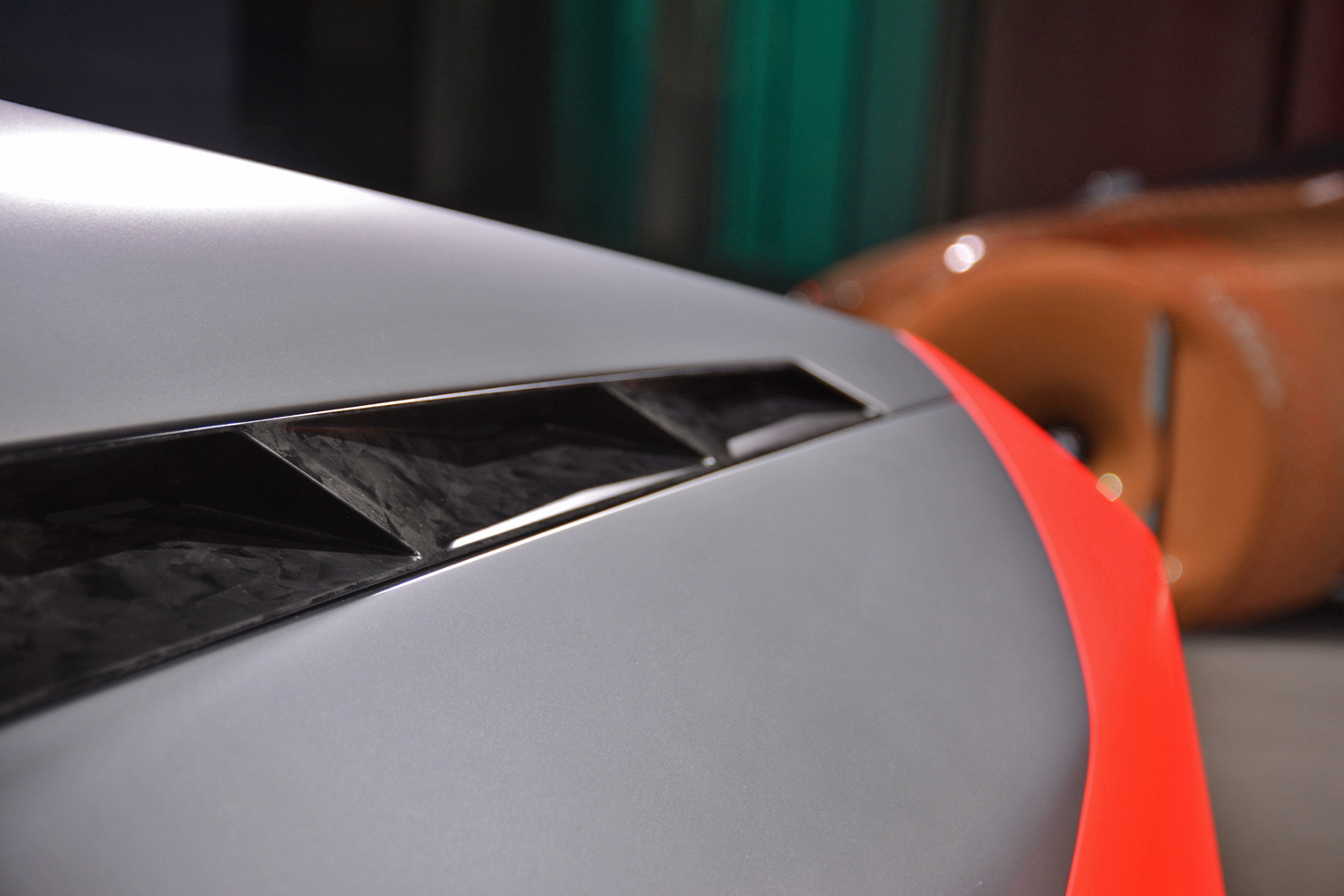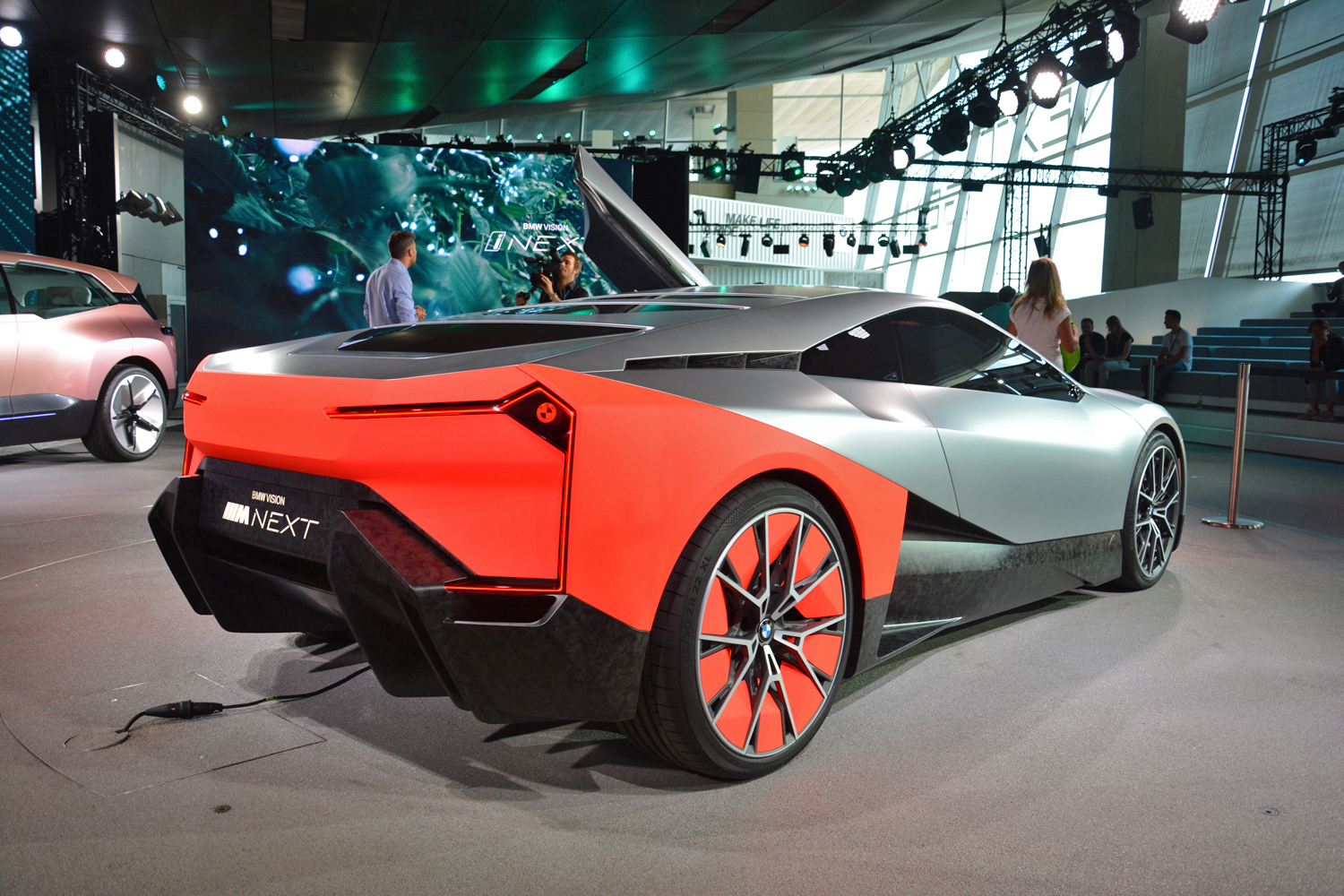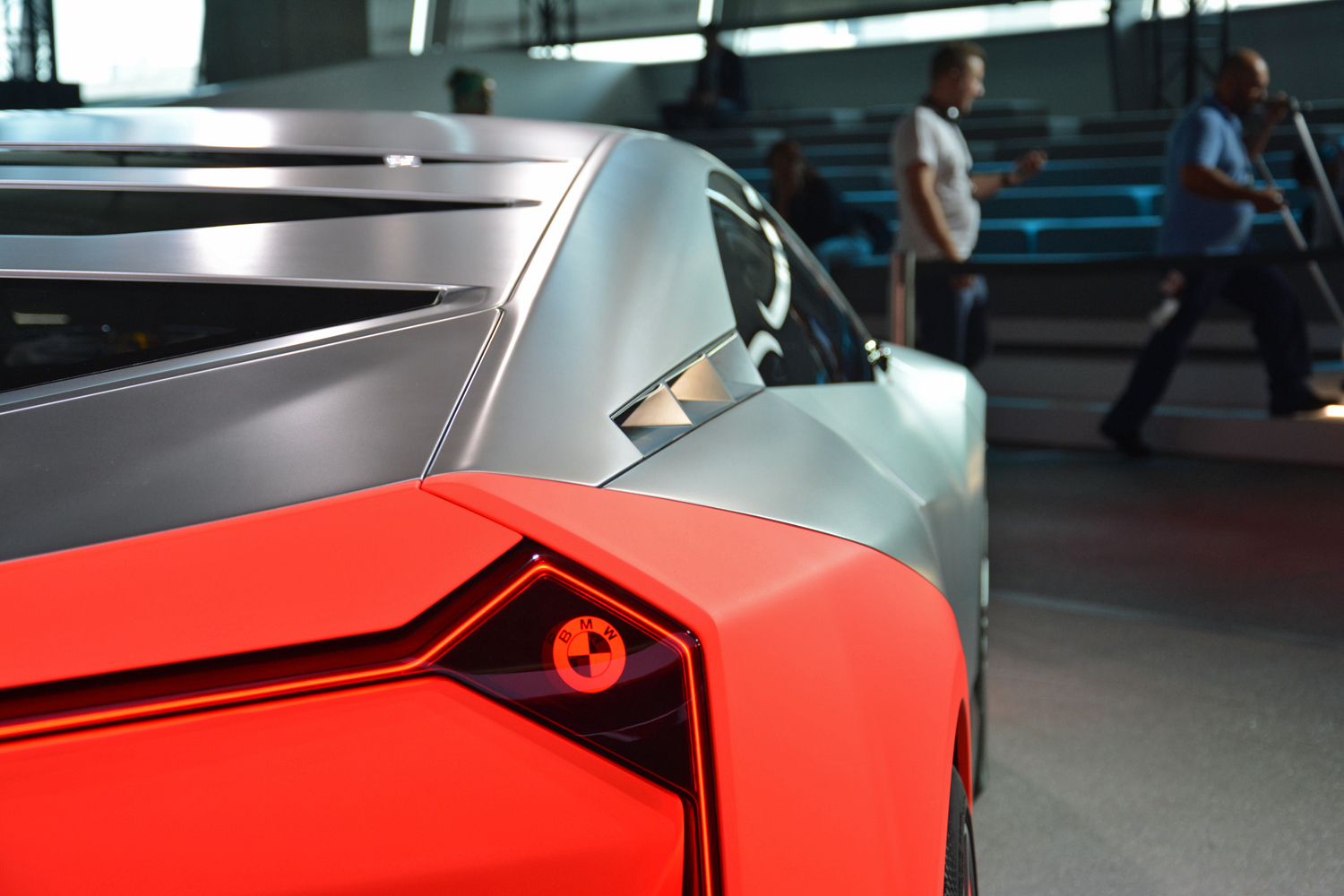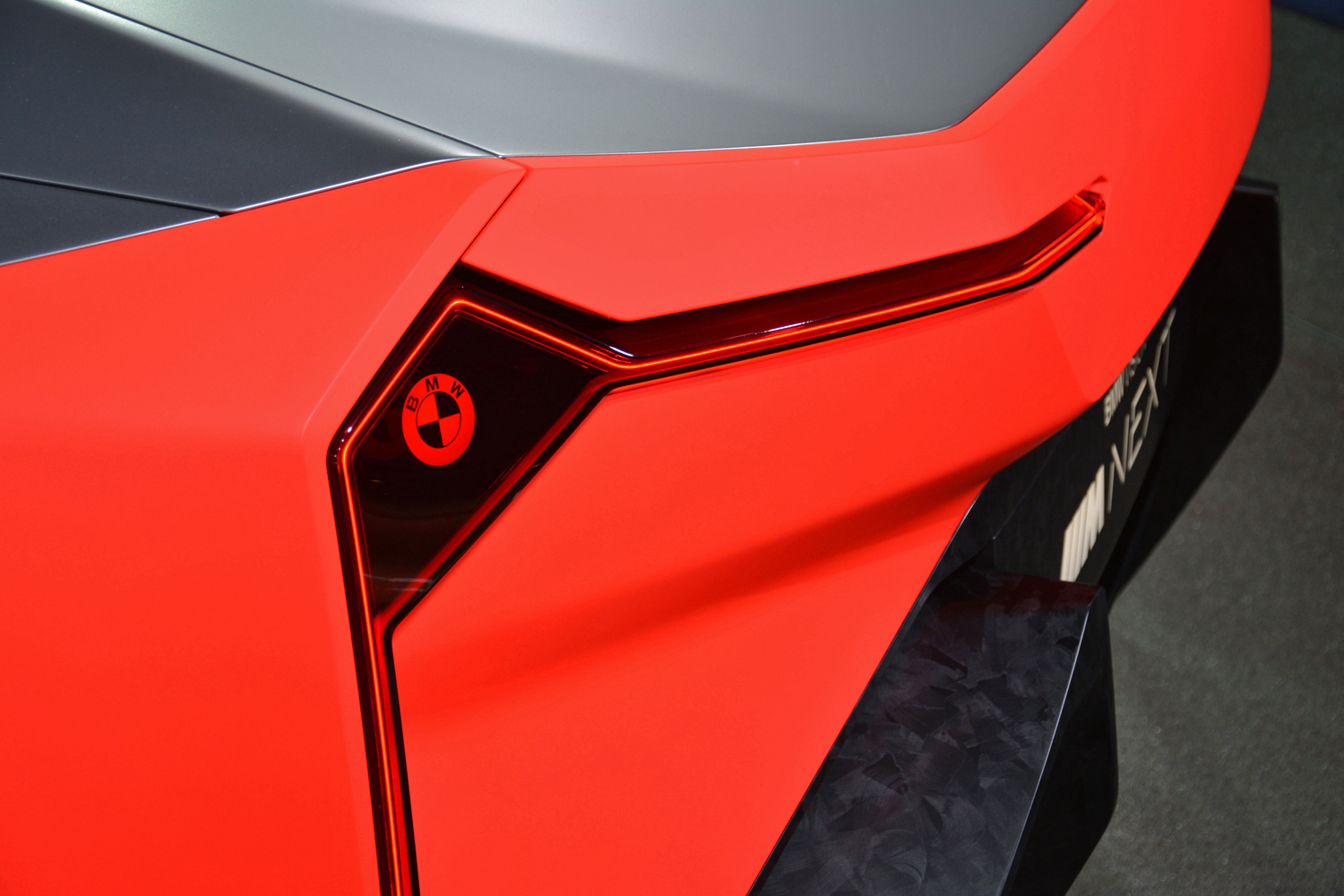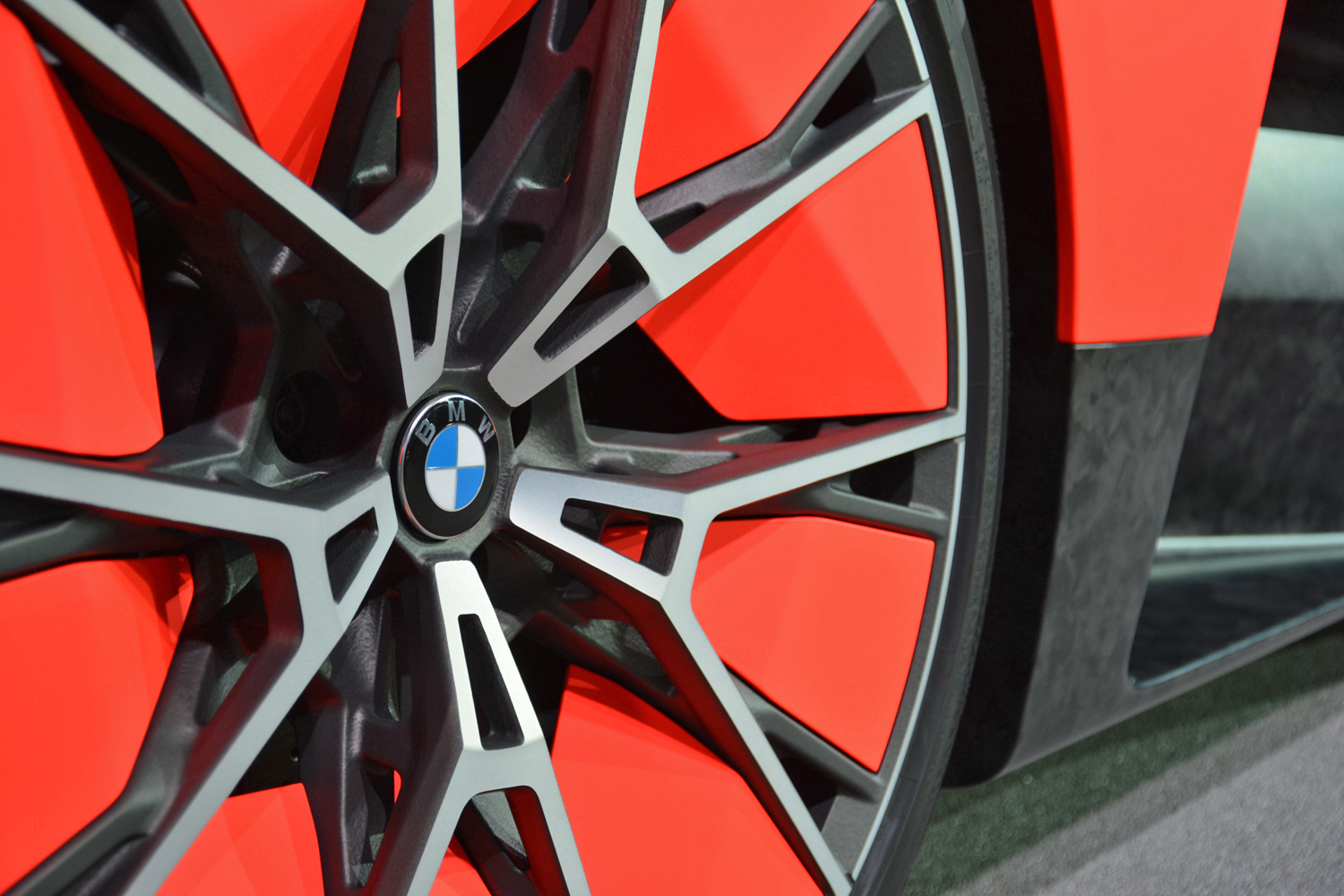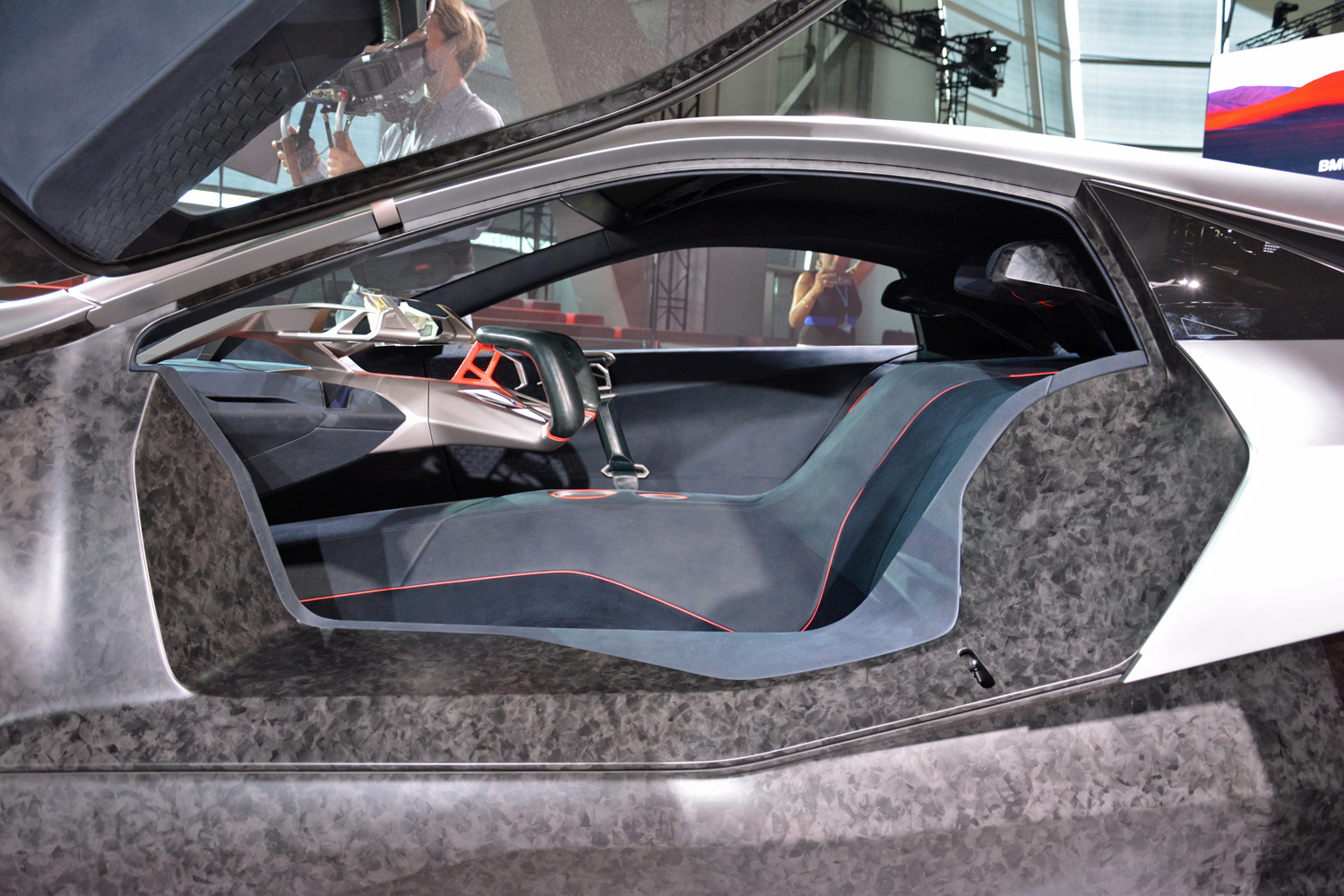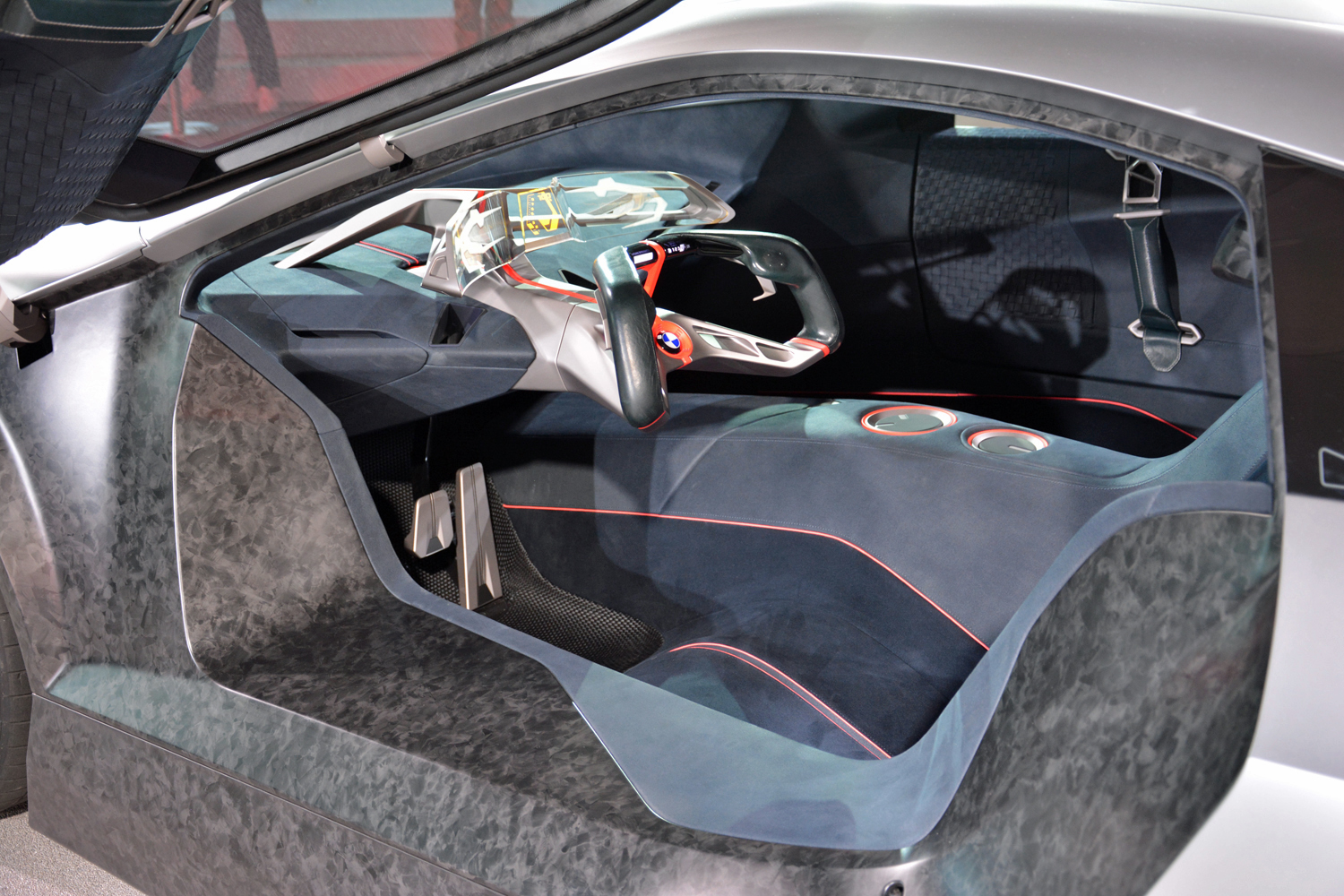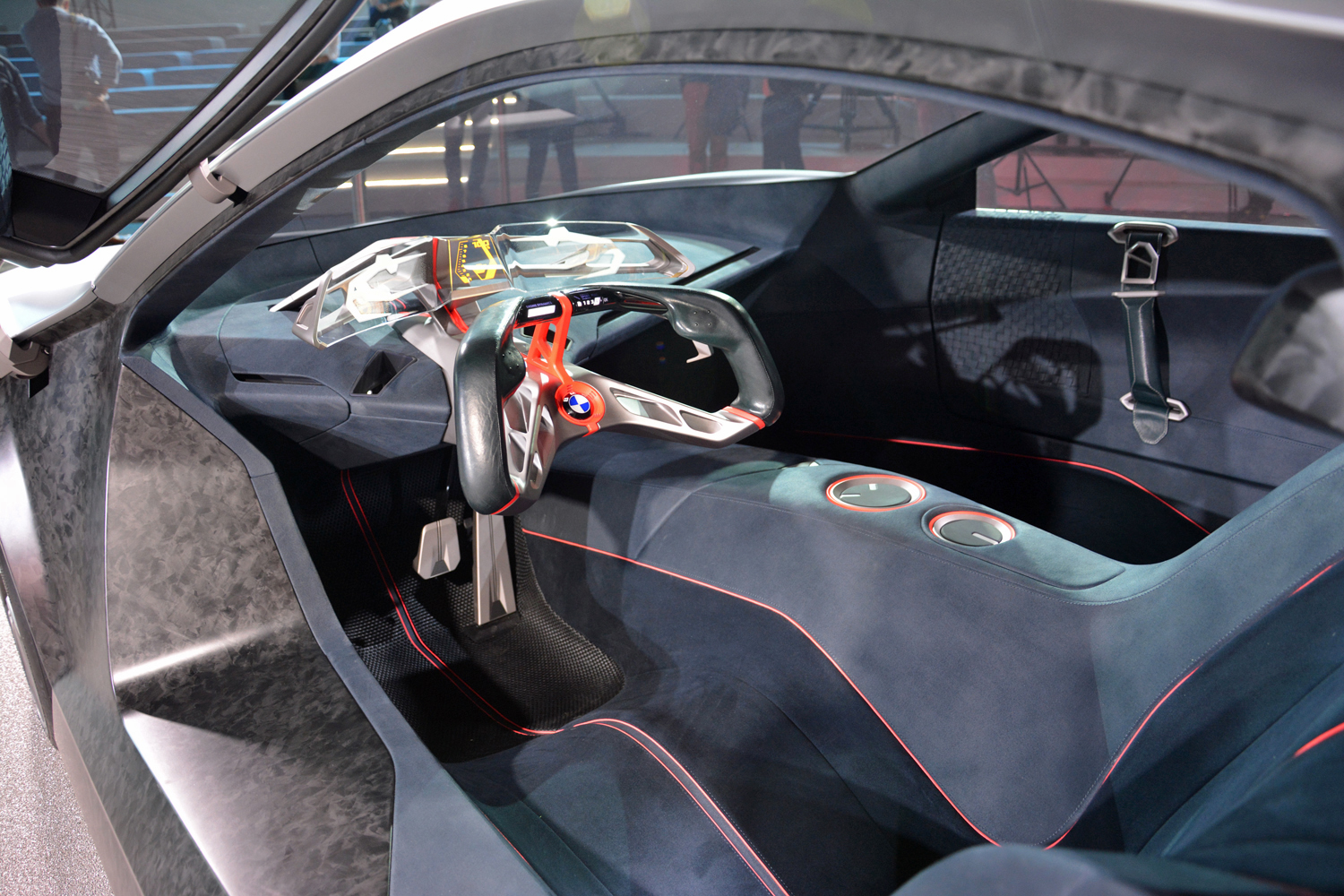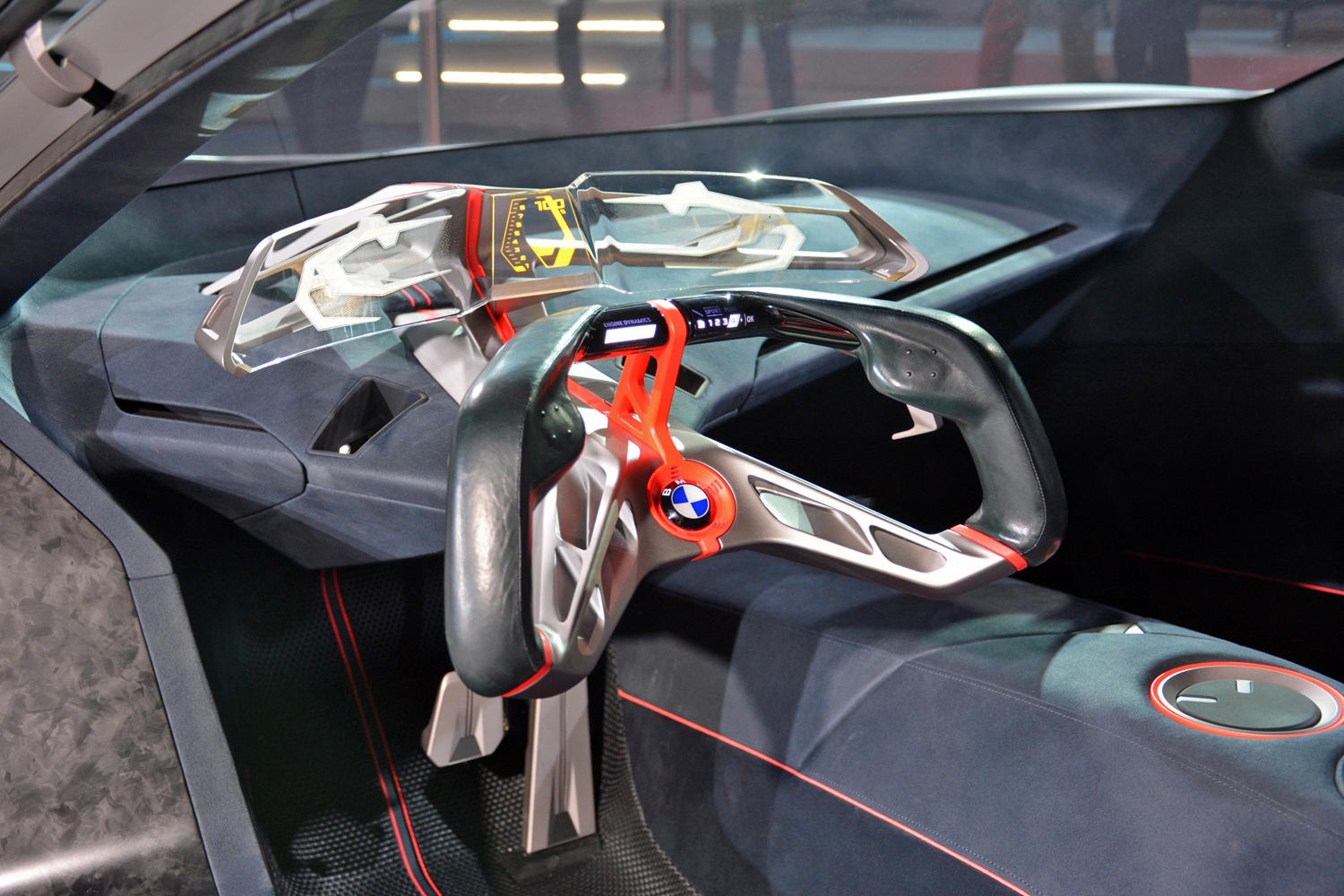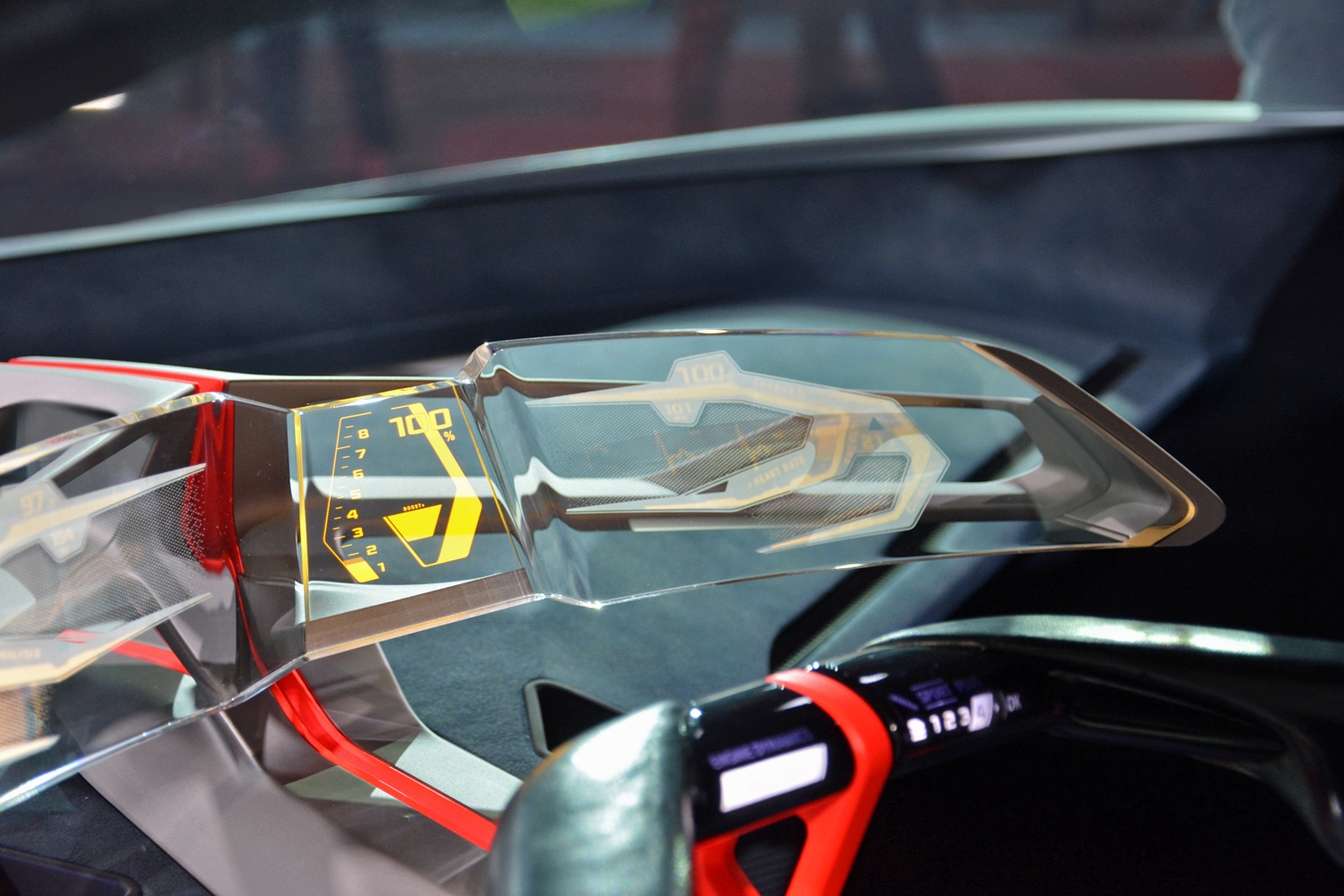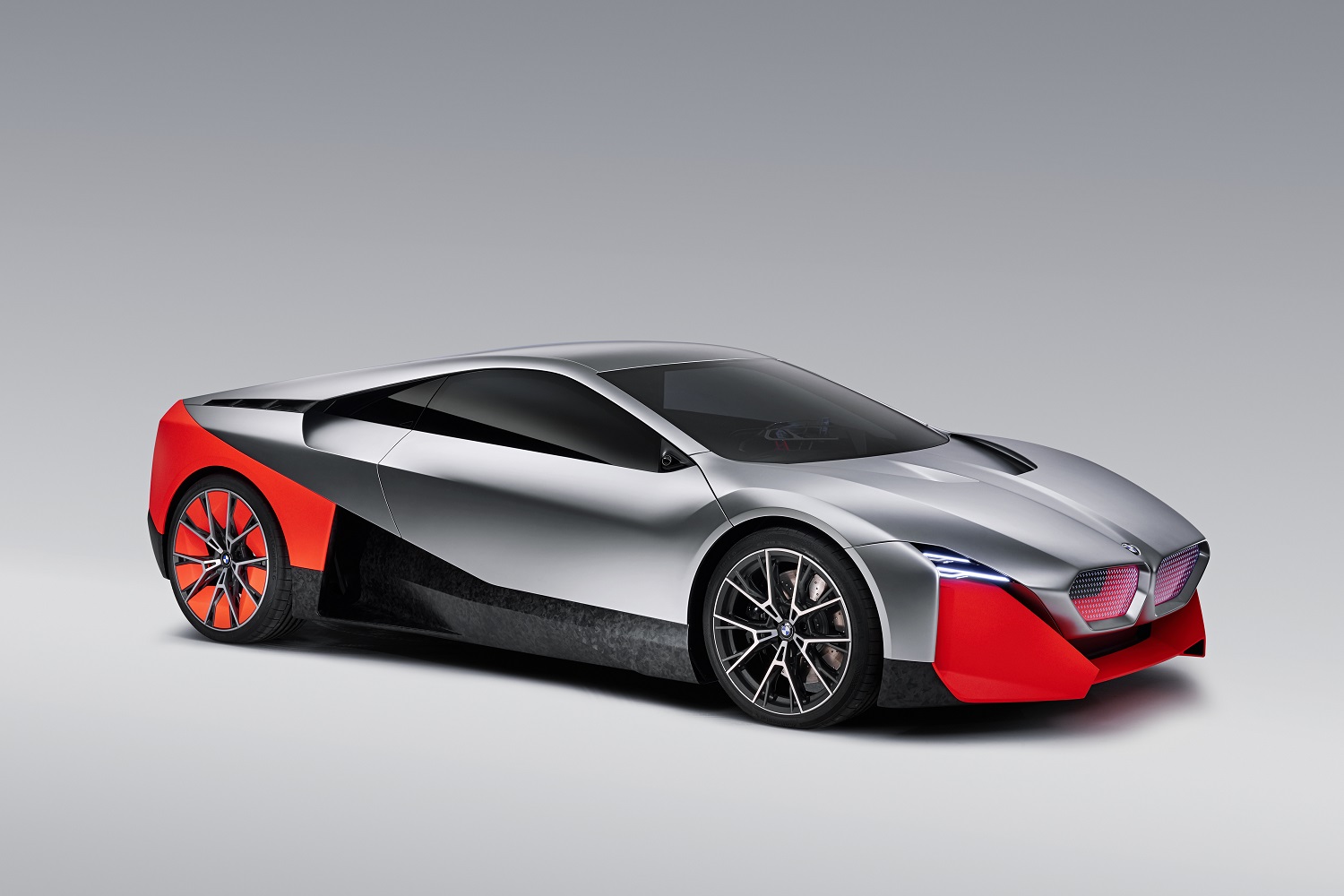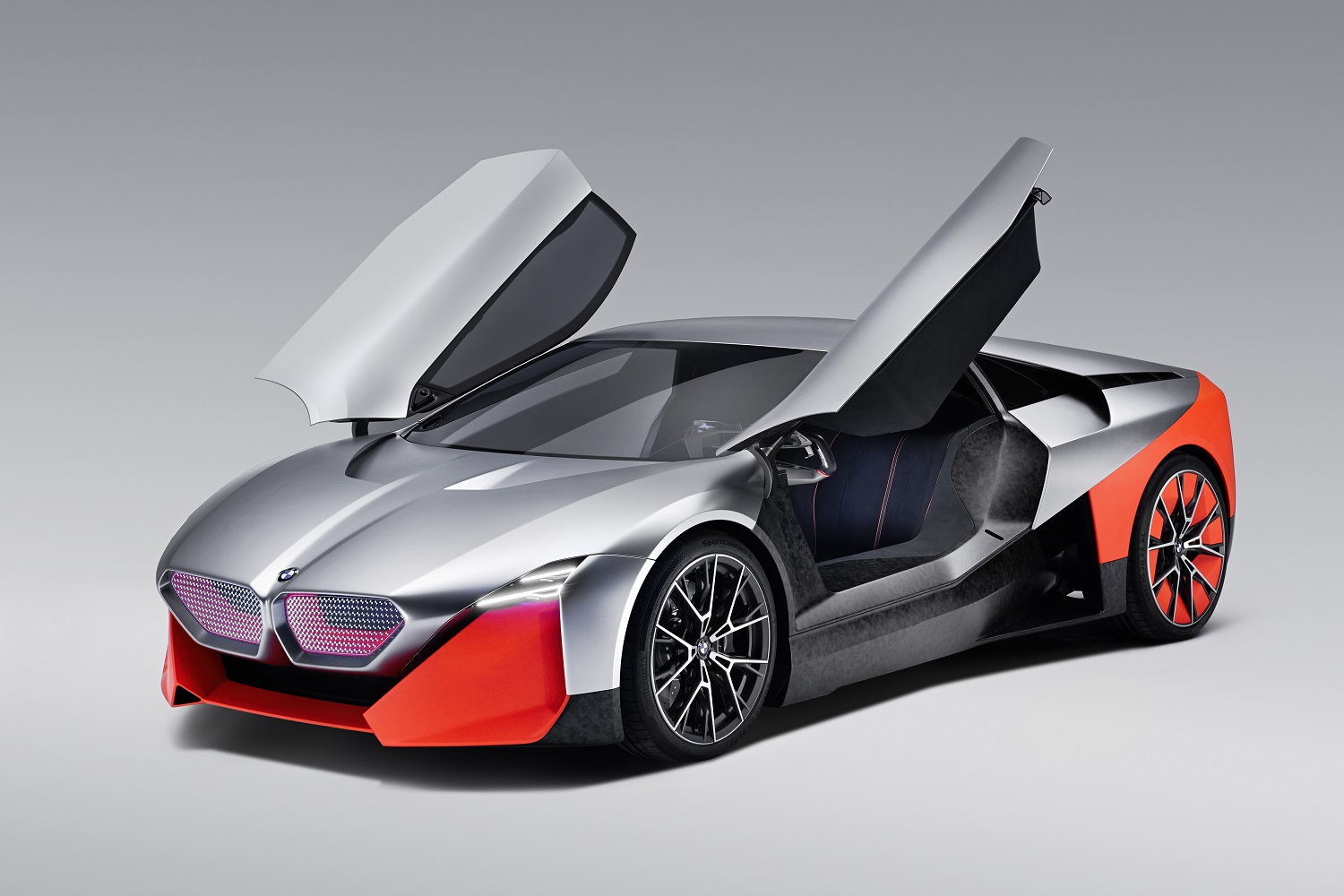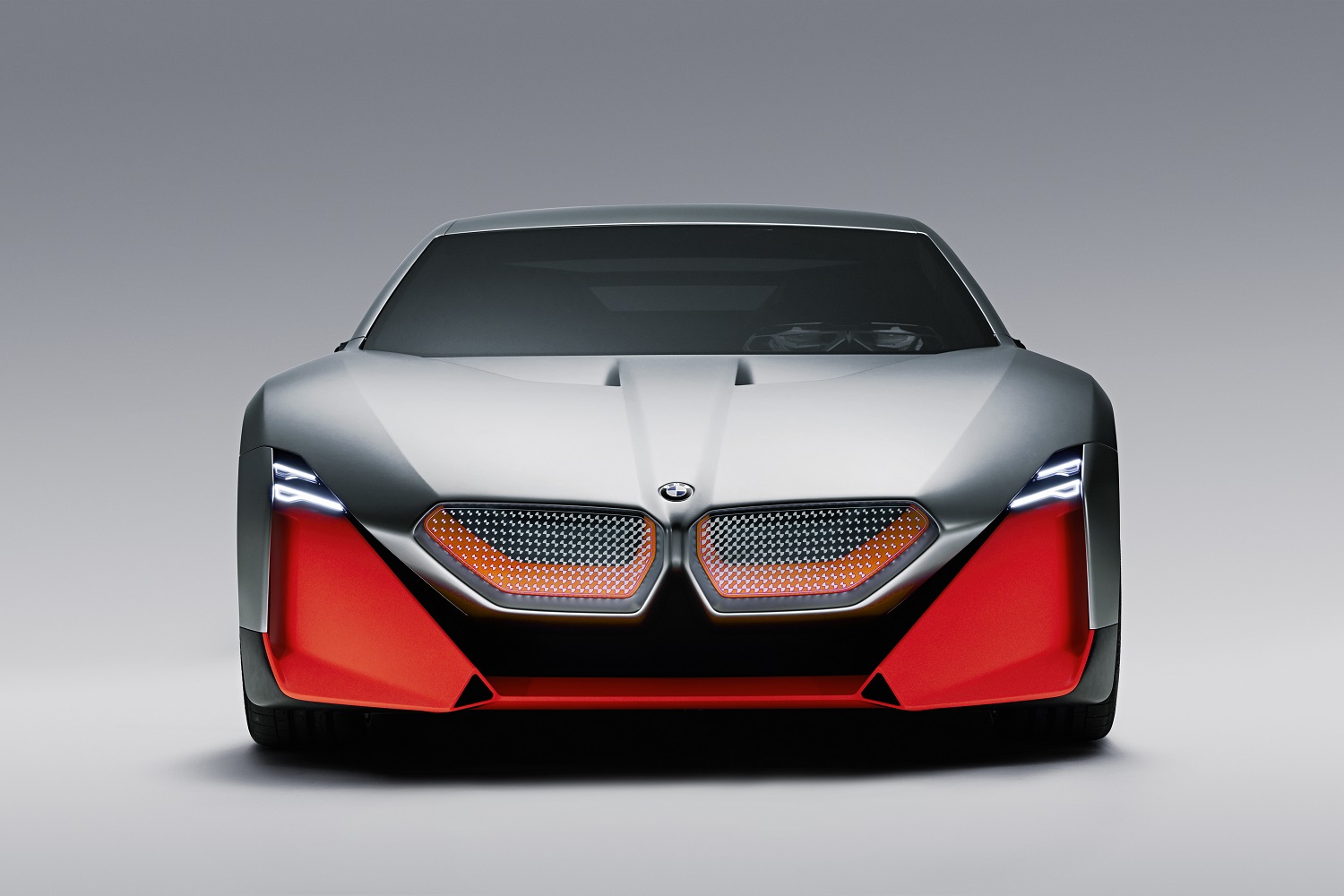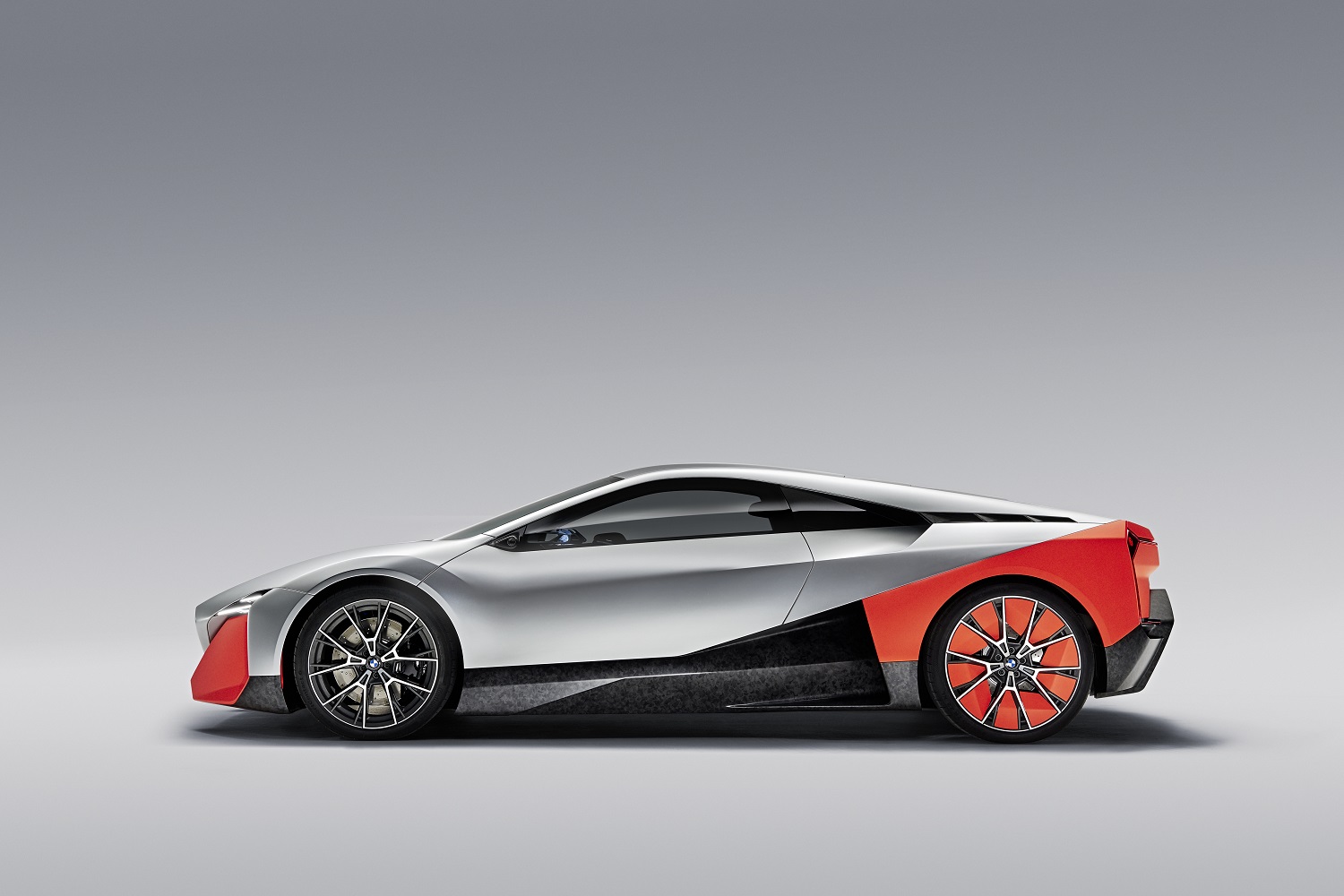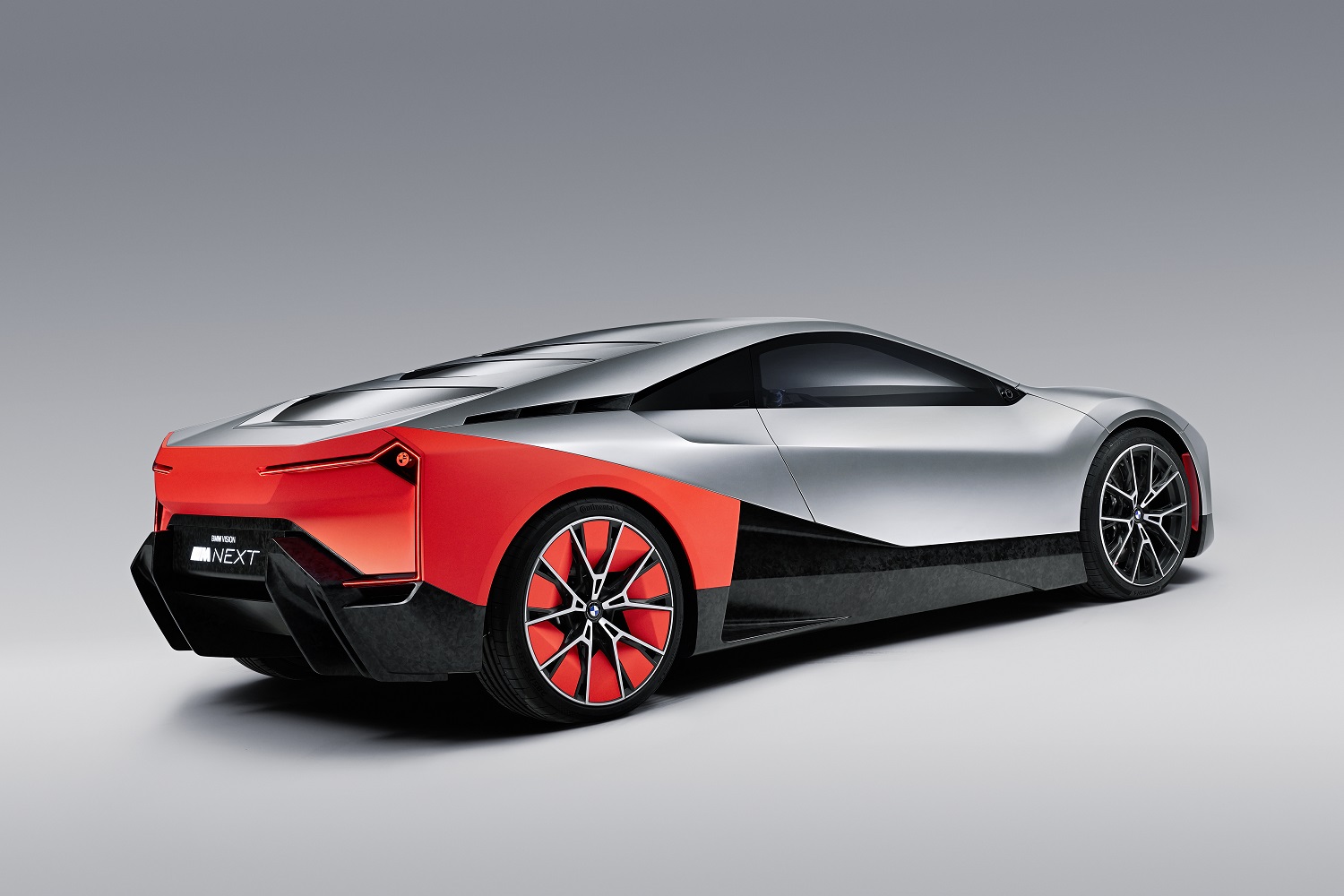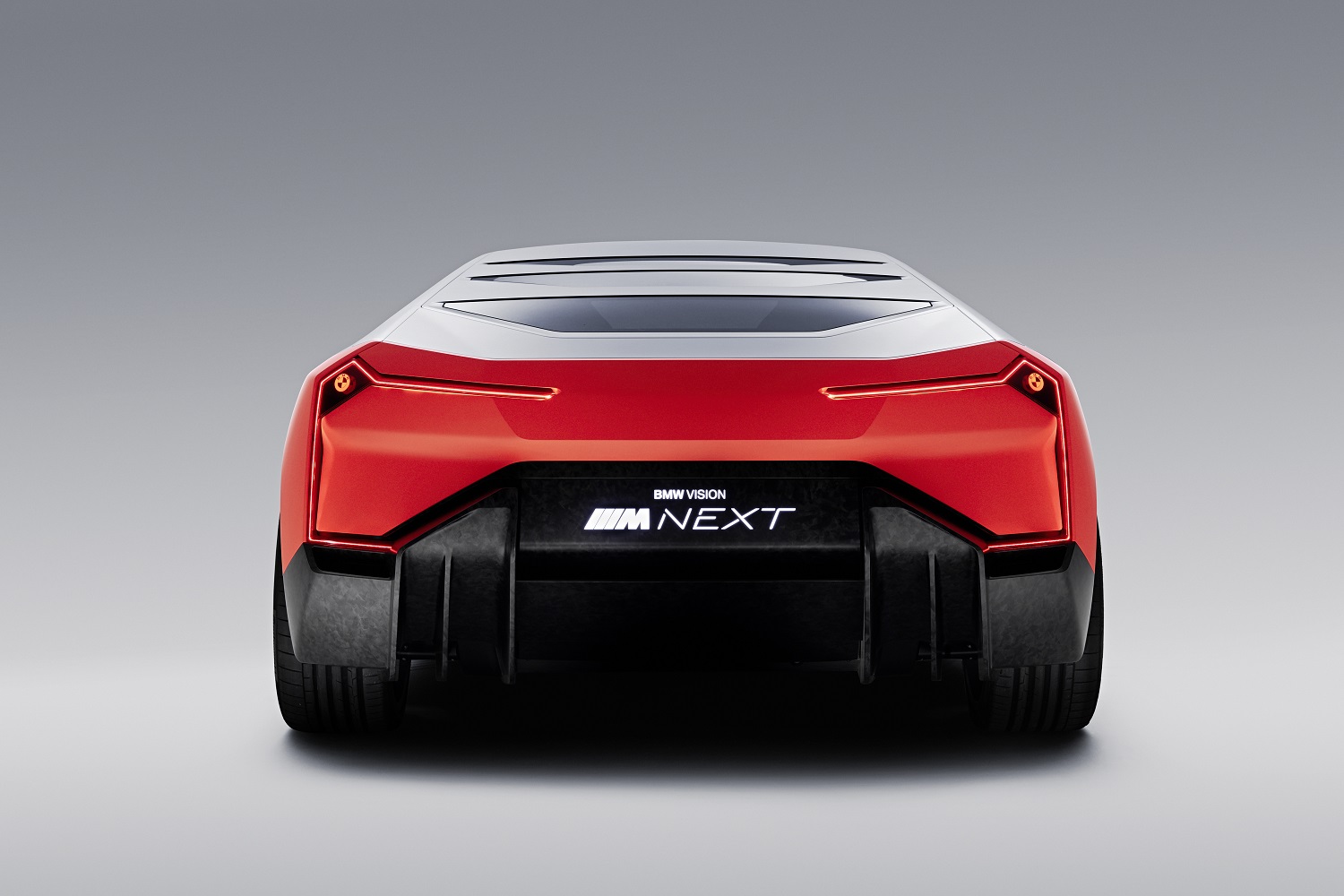As 2020 approaches, BMW’s high-performance M division needs to balance performance and electrification. That’s a tall order; the i8 paves the way, but M believes it can leverage recent and upcoming advancements in electrification technology to make a car that’s cleaner and sportier than anything it builds today. The M Next concept unveiled at BMW’s Munich, Germany, headquarters shows us what the future holds.
Bold and futuristic, the Vision M Next concept wears the traditional short front, long rear proportions of a mid-engined supercar. It looks more like a Ferrari than anything BMW has made in recent memory. It’s nonetheless instantly recognizable as a member of the BMW family when viewed from the front thanks to wide kidney grilles inspired by a turbine’s air intake, but thin LED headlights give it a futuristic, almost robotic look. Out back, roundel emblems positioned on either side of the fascia create a visual link between the company’s newest concept car and the M1, one of its most illustrious past models made between 1978 and 1981.
It’s not retro, though. It’s decidedly avant-garde. Adrian van Hooydonk, BMW’s design director, told Digital Trends the M Next doesn’t wear chrome trim because his team deemed it wasn’t necessary on a performance car. “By leaving a lot of things off, the details become more important,” he explained.
The Vision M Next unlocks itself automatically as soon as facial recognition technology detects the driver’s presence. Its gull-wing doors swing open at the touch of a button, revealing a minimalist, driver-focused interior made with an unusual blend of materials like synthetic fibers and anodized titanium. BMW explained it intentionally used as little leather as possible.
Minimalist doesn’t mean basic, though. Slipping inside feels like taking a seat in a fighter jet. BMW placed what it calls a curved glass display right in the driver’s line of sight; it stretches around the rectangular steering wheel like a visor to display relevant information about the car its surroundings. The curved glass display replaces the instrument cluster. Information is also shown on an augmented reality head-up display.
While BMW is investing a significant amount of money into electric technology, the Vision M Next concept argues the gasoline-powered engine won’t completely go away for many decades. It receives a gasoline-electric plug-in hybrid powertrain made up of a turbocharged four-cylinder engine and two electric motors. The system delivers 600 horsepower to the four wheels, which is enough for a three-second sprint from zero to 60 mph and a 186-mph top speed. Alternatively, the M Next can travel on electricity alone for about 62 miles. It delivers the best of both worlds, according to BMW.
Electric cars run almost silently, yet sound plays a big role in making a high-performance car thrilling to drive. To that end, BMW asked German composer Hans Zimmer to create the sound that cars like the Vision M will make when they’re running exclusively on electricity. Zimmer is an Oscar- and Grammy-winning composer who has created music for more than 150 films, including The Dark Knight trilogy and Gladiator. The clip embedded below previews what a car like the Vision M might sound like when its gasoline-powered engine is turned off. It’s not as aggressive as an exhaust note, but it fits the character of a futuristic, battery-powered sports car well, if you ask us.
Speaking of, the electric motor that zaps the front axle into motion comes from the iX3, so it’s a unit headed for production. Klaus Fröhlich, BMW’s chief engineer, told Digital Trends his team applied many of the lessons learned from the i8 project to the M Next. The through-the-road all-wheel drive system eliminates the need for a driveshaft, for example, and the carbon fiber construction keeps weight in check. All told, the concept is much more realistic that it might appear to be at first glance.
And yet, officially, the BMW Vision M Next concept is only a design study. It provides a glimpse into the future of sporty driving, according to van Hooydonk. All of the executives we spoke to hinted there’s a good chance it will transition into a production model, however.
“Our job was to make people dream, make them want. If we do our job well, one day we could fulfill that dream,” van Hooydonk said with a smile. “Technology will change, it always has, but it doesn’t have to mean the end of emotions behind the wheel,” he added.
Fröhlich echoed his comments without confirming the M Next is already on its way to production. On a secondary but more lasting level, he told Digital Trends he sees electrification as the next evolution for M, whose mission is to make cars that “go like hell.” The message echoing loudly through BMW’s headquarters in the wake of the M Next’s unveiling is that the company won’t leave performance behind as it steps up its electrified car offensive.
If you can’t wait for BMW’s executive team to decide whether to approve the Vision M concept for production, you can make your own by downloading the data set directly from the manufacturer and feeding it to a 3D-printing machine. There is no size limitation; you can make one that’s as big as a monster truck, or print one smaller than a Micro Machine. You’ll need to wait until the early 2020s if you’re more interested in the plug-in hybrid technology, however.
Updated on June 28, 2019: Added information about Hans Zimmer’s sound, 3D-printing data sets.
Editors' Recommendations
- Apple’s new M2 MacBook Pro can’t handle the heat — should you still buy it?
- Awesome Tech You Can’t Buy Yet: Ultrafast toothbrushes and a laptop/phone hybrid
- You can now use AR on your phone to explore the Bentley you can’t afford
